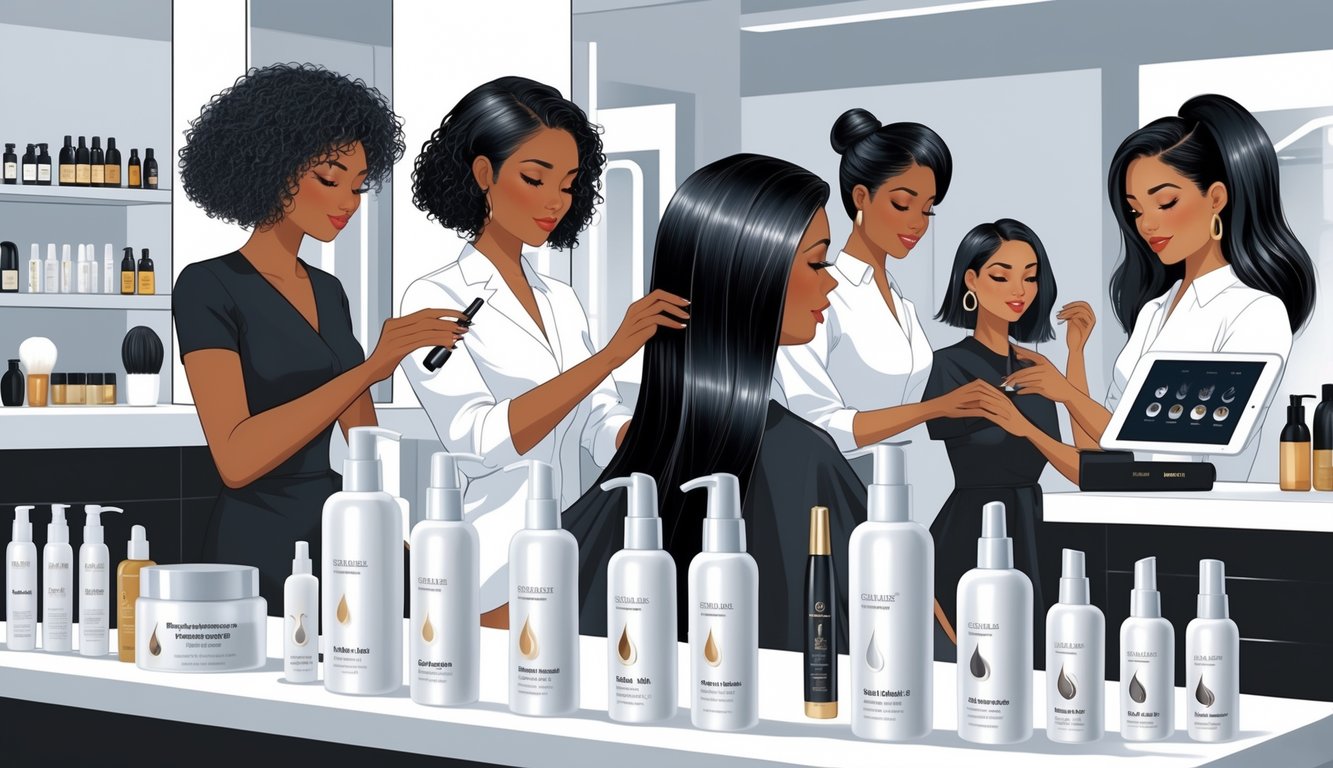Salon-Grade Hair Serums Suddenly Solving Frizz for Professionals
Essential Ingredients for Frizz-Free Results
Waiting for a perfect hair day? Forget it. Humidity will trash my blowout in 20 minutes unless I go full heat-tool psycho. With salon serums, ingredients matter more than the brand. I read labels more than I check texts. Stylists obsess over the wrong formulas all the time, ignoring what actually works.
The Power of Argan Oil, Coconut Oil, and Shea Butter
So, I think I’ve outsmarted frizz, but then I realize half my serums use argan oil—turns out Moroccan argan isn’t just hype; it’s loaded with vitamin E, fatty acids, all that good stuff. Clients always ask why pros use coconut oil or shea butter, even if their hair feels heavy after. Those two are like moisture tanks. You get deep nourishment, no waxy look, unless you dump half a bottle on your head (been there, wedding day, never again).
People who skip shea because of “buildup” probably bought the cheap kind. Honestly, in pro serums, argan, coconut, and shea barely ever cause buildup—the formulas keep oils suspended so they don’t just sit there. Good Housekeeping’s 2025 anti-frizz panel says these three, in the right ratio, smooth cuticles and cut flyaways by double digits. But if someone claims coconut oil works for every hair type, they’ve never seen fine hair collapse into a greasy pancake before lunch.
Role of Silicones and Dimethicone
Look, I can already hear the anti-silicone brigade groaning, but honestly, does anyone actually believe hair “needs to breathe”? I mean, my scalp isn’t gasping for air at the gym. It’s 2025, and people still act like dimethicone is some secret villain. I’ve tried every “natural” serum out there, and nothing comes close to the way high-quality silicones shut down humidity-induced frizz. If you’re allergic, yeah, skip it, but otherwise? Sorry, I’m not giving up my smooth hair just so my scalp can pretend it’s on a wellness retreat.
Dimethicone’s the one I reach for when I want that instant silkiness—like, even after a single wash, the difference is wild. (Pro tip: barely a drop, or you’ll end up with helmet hair. Learned that the hard way.) I actually tested it in the salon once—half my head with, half without. Guess what? The silicone side had way fewer complaints about frizz the next day. People freak out about “buildup,” but come on, most serums these days use water-soluble silicones. Regular shampoo, and they’re gone. Not rocket science.
And those “silicone-free” labels everyone loves to flash? No one mentions how they just swap in heavier oils or waxes. So, more buildup, not less. Am I missing something? Salon-favorite serums nearly always have a silicone base. There’s a reason stylists keep restocking them—less drama, fewer bad hair days, end of story.
Keratin and Keratin Treatments
Here’s what really gets me: people talk about keratin like it’s some mystical elixir, but it’s literally just the protein your hair’s made of. That’s it. When I use a keratin serum after a smoothing treatment—whether it’s a full-on Brazilian or one of those “express” things—it’s like patching up the hair shaft with invisible tape. My own chemically-fried hair? Keratin products actually stretched out the time before split ends showed up and killed off that random mid-shaft frizz. Oils and masks couldn’t keep up.
Salons push keratin serums post-treatment for a reason. If you work them into your weekly routine (especially if you’ve bleached or heat-styled your hair to death), the real perk isn’t instant slipperiness—it’s that your hair doesn’t balloon up every time the humidity spikes, because the cuticle’s less busted. Not magic, just putting protein back where it’s missing. Simple, but nobody wants to hear that.
But don’t get cocky—too much keratin? Suddenly your hair’s snapping like stale spaghetti. I had a client brag about her weekly protein masks, then wonder why her brush was full of broken hair. Moderation, people. If your stylist says “enough,” maybe listen.
Additional Nourishing Oils: Jojoba and Castor Oil
Everyone acts like jojoba oil’s the new holy grail. I ignored it for years—big mistake. Turns out, it’s almost identical to the oil your scalp makes, so it never left my hair limp or greasy. I love how it just disappears in, no residue, no weird slick feeling. When brands throw it in their serums, it’s not for the label—it’s because clients want that softness without the “I haven’t showered” look.
Castor oil? Took me forever to figure out that you shouldn’t use it straight unless you want to look like you dipped your hair in salad dressing. But in tiny doses, especially blended into a serum, it’s a game-changer for shine and strength. I did a custom mix for a curly-haired client—just a few drops of castor in her leave-in, and her breakage basically halved after a month. Not scientific, just counting what ended up in the comb.
Mixing jojoba and castor (in small amounts, please) with lighter carriers? That’s when you see real strength and shine, not just the fake “moisture” brands promise. The best anti-frizz serums of 2025—yeah, the ones in all the industry reviews—always sneak these oils in, even if they don’t brag about it on the front.
And can we talk about scent? Why does everyone trust a coconut-smelling serum but side-eye anything with jojoba or castor? Someone should really fix that.
Choosing the Right Hair Serum for Your Hair Type

Honestly, picking a serum shouldn’t feel like prepping for a chemistry final. I’ll grab whatever’s closest if I’m running late, and sometimes my hair floats around like silk, sometimes it just… collapses. If I’d actually listened to stylists about density, porosity, or “moisturizing molecules,” maybe I’d have less drama, but here we are.
Best Options for Fine and Thin Hair
Fine hair and heavy silicones? Disaster. Every drugstore bottle screams “shine!” but then your hair’s glued to your head. I sat through a pro salon demo, and not a single stylist told me to layer on thick, oily stuff. They all pointed to super-lightweight serums, the kind that smooth cuticles and fight static without leaving a film. Gina (the only colorist I trust who isn’t a walking ad) swears by hydrolyzed wheat protein and panthenol—just enough gloss, no pancake hair.
Split ends—ugh, don’t even start. Every bottle promises to “seal” them, but unless you’re getting trims, it’s a joke. For volume, I just stick to what experts suggest for different hair types: water-based serums, not those heavy “reparative” oils that slide right off by lunch.
Serums for Coarse and Thick Hair
Walking through humidity with thick hair is a nightmare. I remember fighting with a brush, only for everything to explode into frizz by noon. There’s no miracle serum, but thick, wavy hair does way better with richer, silicone-heavy or argan-infused formulas. My friend rolls her eyes at argan oil, but after heat styling, I see fewer flyaways—especially with dimethicone in the mix. The industry guides all say high-silicone blends help, and honestly, my shelf of half-used bottles backs that up.
Don’t go overboard. Slathering on a palmful just gives you helmet hair. I stick to mid-lengths, not roots—unless I’m aiming for that “haven’t washed in a week” vibe. Blunt cuts help distribute serum, but I always ignore that advice and regret it.



